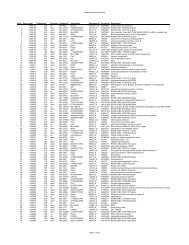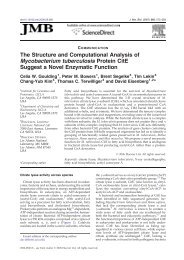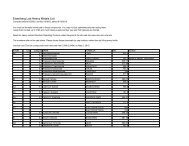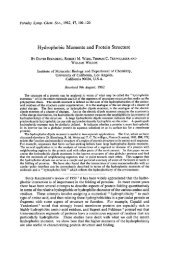Shimming: Theory and Practice - UCLA-DOE
Shimming: Theory and Practice - UCLA-DOE
Shimming: Theory and Practice - UCLA-DOE
Create successful ePaper yourself
Turn your PDF publications into a flip-book with our unique Google optimized e-Paper software.
In a perfect world, each shim coil would generate exactly one harmonic.<br />
then shimming would be a simple process of going through all the shims<br />
one time <strong>and</strong> maximizing each one.<br />
In reality, due to design compromises <strong>and</strong> winding errors, each shim coil<br />
generates several harmonics <strong>and</strong> the shims interact.<br />
An example of how the shims get mixed:<br />
Imagine we had only z <strong>and</strong> z 2<br />
shims.<br />
In this example the center of the<br />
RF coil is above the center of the<br />
shim set.<br />
If the initial error in the field is<br />
ΔB 0 =a+bz-cz 2 , <strong>and</strong> the operator<br />
first tries increasing z 2 , the field<br />
will get worse (b). Decreasing<br />
z 2 reduces the inhomogeneity (c)<br />
but the field is clearly not<br />
homogeneous so the lineshape<br />
will be poor.<br />
In this example, the correct<br />
procedure would have been to<br />
increase z 2 as in (b), then<br />
decrease z until the field was<br />
homogeneous.<br />
This illustrates why there are local maxima, <strong>and</strong> why one often has to move a<br />
shim so that the lock level decreases to find a higher maximum.











